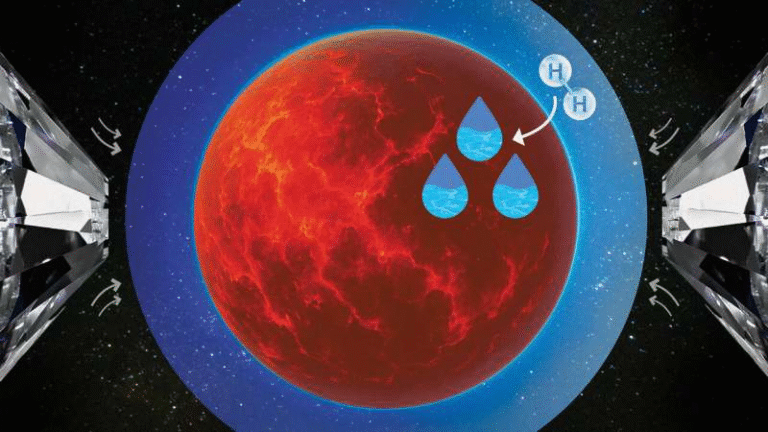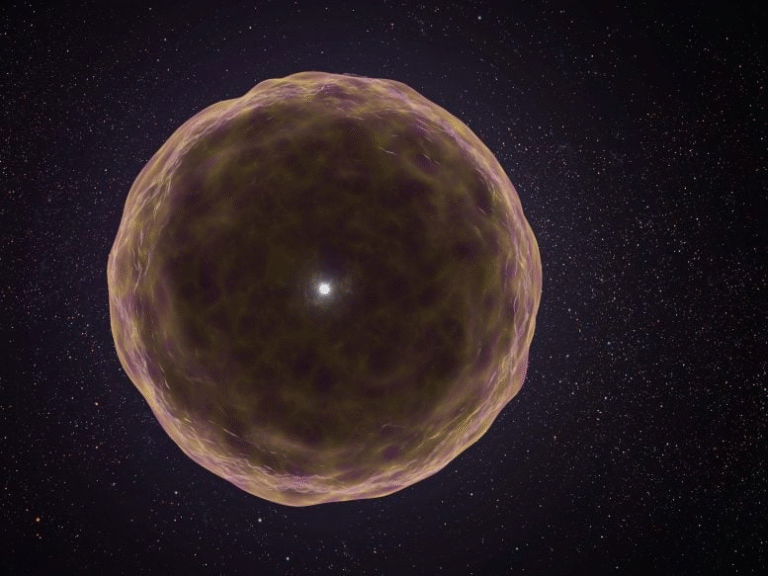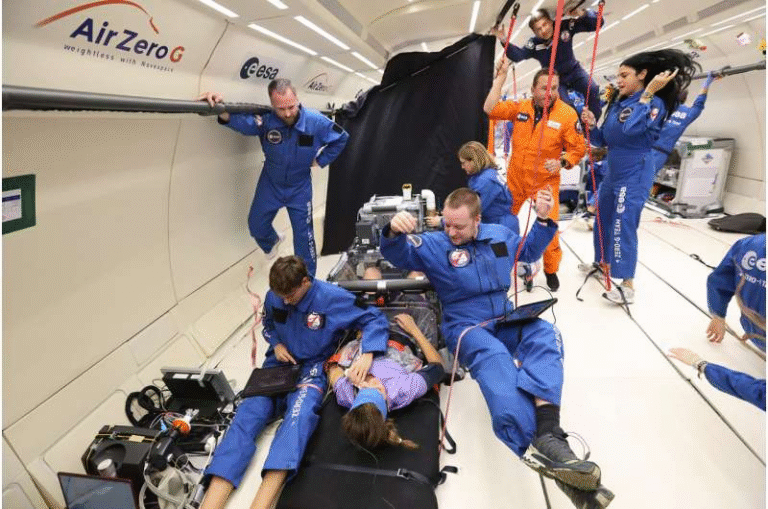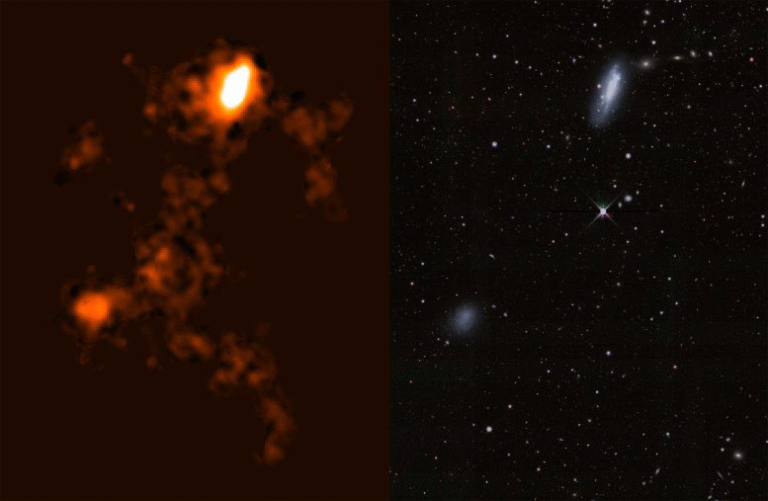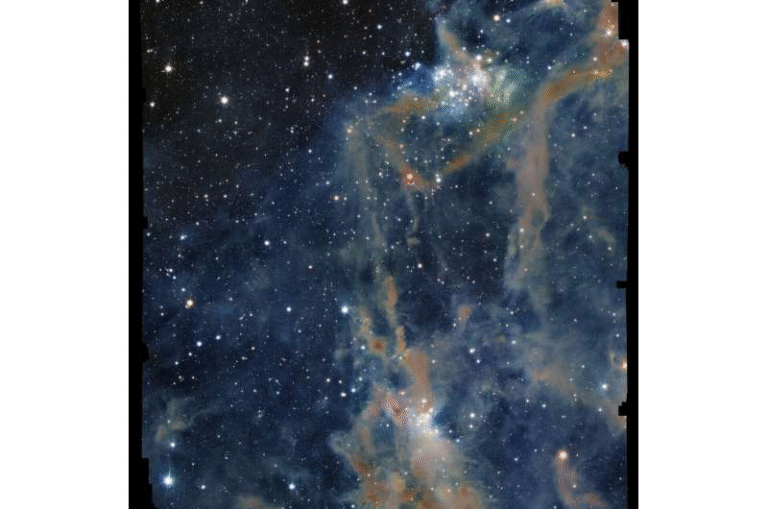A Rare Brown Dwarf Called “The Accident” Reveals Hidden Chemistry of Giant Planets
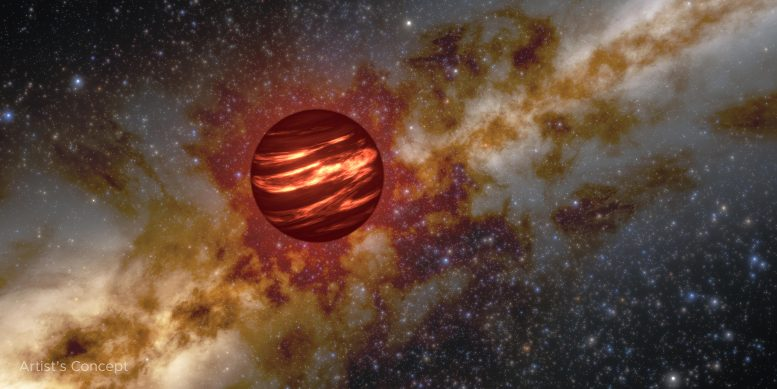
Astronomers studying a strange brown dwarf known as “The Accident” have uncovered something that had long been missing from our understanding of giant planet atmospheres: silane (SiH₄). This rare silicon-based molecule, long suspected to exist in the atmospheres of Jupiter, Saturn, and other gas giants, has finally been detected for the first time.
The discovery, made using the James Webb Space Telescope (JWST), provides crucial clues about why silicon has remained so elusive in gas giants and sheds light on the chemical environment of the early universe.
What Exactly Is “The Accident”?
The object’s formal designation is WISEA J153429.75–104303.3, often shortened to W1534. It was first noticed in 2020 by citizen scientist Dan Caselden while combing through data from NASA’s NEOWISE (formerly WISE) mission as part of the Backyard Worlds: Planet 9 project. This project invites volunteers worldwide to help spot unusual moving objects in NASA’s infrared sky survey data.
The brown dwarf was nicknamed “The Accident” because it didn’t look like anything astronomers expected. Its properties didn’t fit into existing categories: its atmosphere showed traits typical of both very old and relatively young brown dwarfs. Because of this odd mix, standard detection techniques missed it until careful reanalysis brought it to attention.
Brown Dwarfs Explained
To appreciate why this object is unusual, it’s important to understand brown dwarfs in general. A brown dwarf is often described as a “failed star” — it is too large to be called a planet but too small to sustain nuclear fusion in its core like a star. They are typically between 13 and 80 times the mass of Jupiter, which makes them heavier than planets but not heavy enough to ignite hydrogen fusion.
When brown dwarfs first form, they are hot and can glow faintly. Over time, they cool down, with their atmospheres taking on characteristics that resemble gas giant planets such as Jupiter and Saturn. Because they don’t orbit stars (many are free-floating), they are often easier to study than exoplanets, where the parent star’s light makes direct observations difficult.
The Role of the James Webb Space Telescope
“The Accident” is an extremely faint and unusual object. In fact, it was so faint that only the advanced instruments aboard the James Webb Space Telescope could properly study its spectrum. Webb’s infrared capabilities allowed researchers to peer deep into the brown dwarf’s atmosphere and detect the fingerprints of molecules within it.
Among the molecules detected were methane (CH₄) and water vapor (H₂O), which are expected in cold substellar atmospheres. But the big surprise was the identification of silane (SiH₄). This molecule had never been observed before in a brown dwarf or gas giant, despite being theoretically predicted to exist for decades.
Why Silane Is Such a Big Deal
Silicon is one of the most abundant elements in the universe, so scientists have long expected it to appear in giant planet atmospheres. Yet past spacecraft missions and telescopic observations failed to find clear signs of it. The detection of silane in “The Accident” provides a missing piece of the puzzle.
Here’s why:
- In metal-rich environments (where elements heavier than hydrogen and helium are more abundant), silicon usually binds with oxygen to form oxides and silicates. These compounds are heavy and sink deep into the atmosphere, out of reach of telescopic observation.
- In contrast, “The Accident” is an extremely metal-poor object. Its metallicity is less than 1% of solar metallicity, meaning it formed with far fewer heavy elements compared to typical stars or planets. With very little oxygen available, silicon could not easily form oxides. Instead, it bonded with hydrogen, producing silane.
- The silane detected is found in the upper atmosphere due to vertical mixing, where material from deeper layers is carried upward. Researchers estimate its abundance at around 19 ± 2 parts per billion (ppb).
This explains why silane has been missing from Jupiter and Saturn: their oxygen-rich atmospheres bind silicon into heavier compounds that sink beneath observable layers. But in a low-oxygen environment like “The Accident,” silane remains detectable.
Age and Origin of the Accident
“The Accident” is not just chemically unusual — it’s also ancient. Astronomers estimate that it formed between 10 and 12 billion years ago, making it one of the oldest known brown dwarfs. Considering that the universe itself is about 13.8 billion years old, this object is essentially a relic from the early days of galaxy formation.
Its low metallicity and halo-like orbital motion through the galaxy suggest it belongs to the Galactic halo population, which consists of old stars and substellar objects that formed when the universe contained fewer heavy elements. This makes the brown dwarf an important time capsule, offering a look into the conditions of the cosmos billions of years ago.
The Specifics of the Detection
The silane signature was identified at an infrared wavelength of 4.55 microns. This is within the mid-infrared range, exactly where Webb’s spectrographs excel. Alongside silane, Webb also confirmed methane and water in the spectrum.
Interestingly, the study indicates that the silane may have been “quenched” at high pressure layers (around kilobar depths) and then transported upward through vertical mixing. Once in the upper atmosphere, its spectral signature became detectable.
Why This Matters for Planetary Science
This discovery has several important implications:
- Understanding Jupiter and Saturn
It explains why silane hasn’t been detected in our solar system’s gas giants. Their higher oxygen content ensures silicon is locked into heavier silicates that remain hidden below observable levels. - Improving Atmospheric Models
Detecting silane helps refine our understanding of chemical processes, cloud formation, and mixing in cold, hydrogen-dominated atmospheres. These models are essential for interpreting exoplanet spectra. - Studying Exoplanets
Brown dwarfs like “The Accident” are easier to observe than exoplanets because they don’t orbit bright stars. Lessons learned from them can be applied to exoplanetary atmospheres, including gas giants and even smaller, potentially habitable worlds. - Clues to the Early Universe
Since “The Accident” formed when oxygen and other heavy elements were far scarcer, its chemistry reveals how planetary atmospheres may have looked in the early universe.
Why Brown Dwarfs Are Important Laboratories
Studying brown dwarfs helps bridge the gap between stars and planets. They let astronomers test atmospheric physics under conditions that overlap with both categories.
Some reasons they are such valuable objects of study:
- Accessibility: Brown dwarfs don’t have nearby stars drowning out their light, so we can directly study their spectra.
- Range of temperatures: They cool as they age, giving astronomers a wide variety of atmospheric conditions to investigate.
- Planetary parallels: Cold brown dwarfs resemble giant planets, allowing scientists to test hypotheses about gas giants without having to wait for rare exoplanet alignments.
Extra: What Exactly Is Silane?
Silane (SiH₄) is a simple molecule composed of one silicon atom bonded to four hydrogen atoms. It is similar in structure to methane (CH₄), except that carbon is replaced with silicon.
In chemistry labs on Earth, silane is used in electronics manufacturing, especially for depositing thin films in semiconductor fabrication. It’s a colorless, flammable gas. In planetary science, it’s interesting because it represents one of the few volatile forms silicon can take in hydrogen-rich atmospheres. Its detection in space has been anticipated for decades.
Instruments Used in the Discovery
The discovery was possible thanks to a combination of instruments and surveys:
- NASA’s WISE/NEOWISE mission: Provided the initial infrared data that allowed the brown dwarf to be spotted.
- Backyard Worlds: Planet 9: The citizen science project that enabled the discovery.
- Gemini South Telescope in Chile: Provided supporting near-infrared imaging to confirm and characterize the faint object.
- James Webb Space Telescope: Delivered the critical infrared spectra that revealed silane, methane, and water in the atmosphere.
Final Thoughts
The universe has a way of surprising astronomers, and “The Accident” is a perfect example. By revealing silane in its atmosphere, this faint brown dwarf has not only solved a mystery about Jupiter and Saturn but also opened new avenues for understanding the chemistry of exoplanets and the early universe. Sometimes it takes studying the most unusual objects to learn about the ordinary ones.
Research Reference: Silicate precursor silane detected in cold low-metallicity brown dwarf, Nature (2025)
